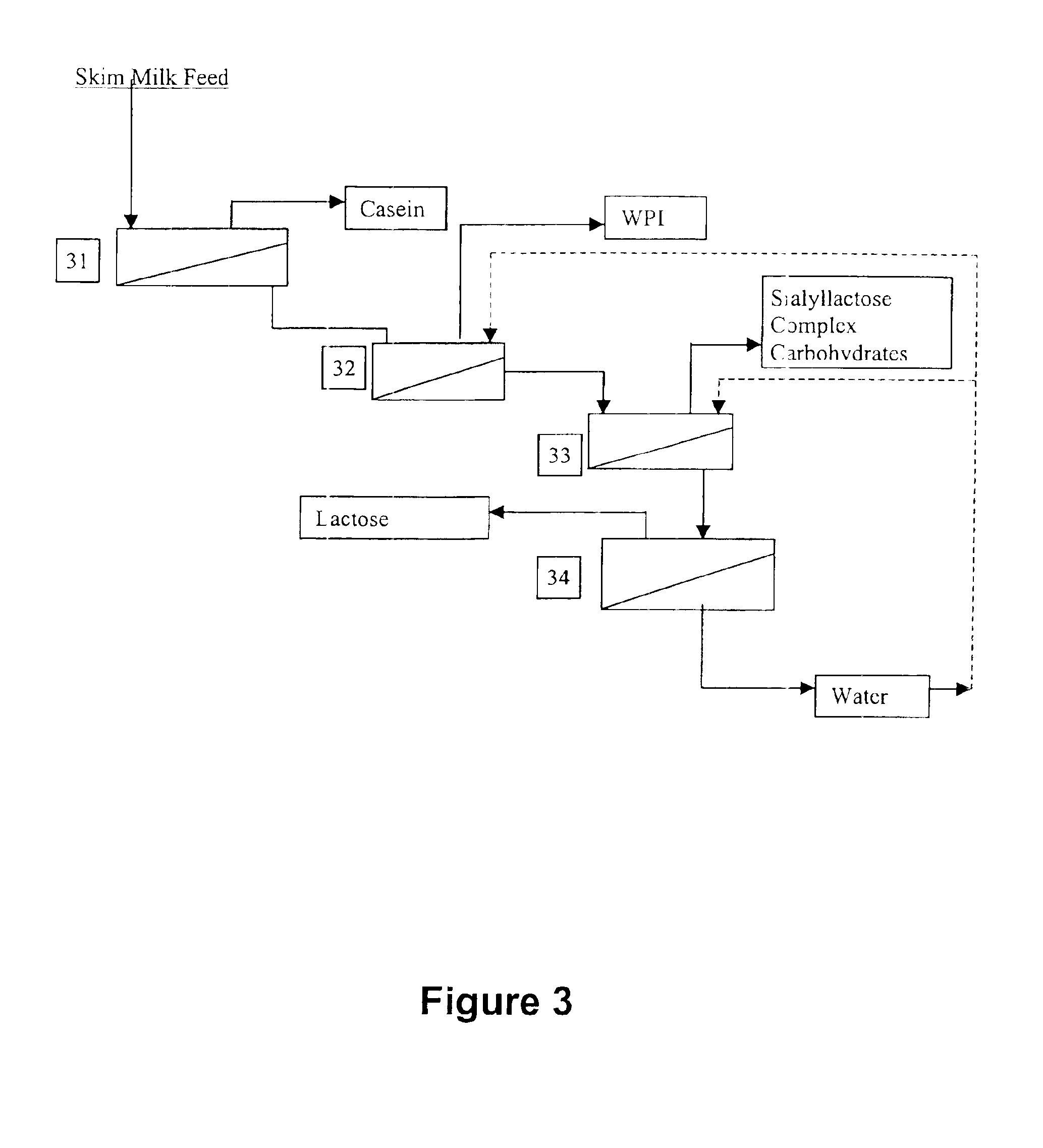Method and apparatus for separation of milk, colostrum, and whey
a technology of colostrum and whey, which is applied in the field of method and apparatus for sequential separation of various nutritional components of milk, can solve the problems of undesirable alteration of the natural quality and character of milk, high cost and complexity of the chromatographic separation method, and inability to achieve the effect of enhancing the nutritional value of milk and being readily determinabl
- Summary
- Abstract
- Description
- Claims
- Application Information
AI Technical Summary
Benefits of technology
Problems solved by technology
Method used
Image
Examples
Embodiment Construction
Various components and subcomponents of milk differ in their physical properties, such as solubility, affinity, molecular weight, and permeability. For example, milk fat and casein are insoluble in water and therefore exist in suspended form in milk. The molecular weight of milk fat and casein are significantly larger than the molecular weights of other milk components. Milk also contains soluble whey proteins such as immunoglobulins, albumin, α-lactalbumin, and β-lactoglobulin, which have molecular weights that are smaller than the molecular weights of fat and casein, and that are larger than the molecular weights of carbohydrates. Carbohydrate components of milk are also characterized by different molecular weights; for example, complex milk carbohydrates, such as 3′ sialyllactose and 6′ sialyllactose, have larger molecular weights than those of simple milk carbohydrates such as lactose.
Generally, the molecular weights of various milk components can be ranked as follows:
Fat and li...
PUM
| Property | Measurement | Unit |
|---|---|---|
| temperatures | aaaaa | aaaaa |
| height | aaaaa | aaaaa |
| path length | aaaaa | aaaaa |
Abstract
Description
Claims
Application Information
 Login to View More
Login to View More - R&D
- Intellectual Property
- Life Sciences
- Materials
- Tech Scout
- Unparalleled Data Quality
- Higher Quality Content
- 60% Fewer Hallucinations
Browse by: Latest US Patents, China's latest patents, Technical Efficacy Thesaurus, Application Domain, Technology Topic, Popular Technical Reports.
© 2025 PatSnap. All rights reserved.Legal|Privacy policy|Modern Slavery Act Transparency Statement|Sitemap|About US| Contact US: help@patsnap.com



